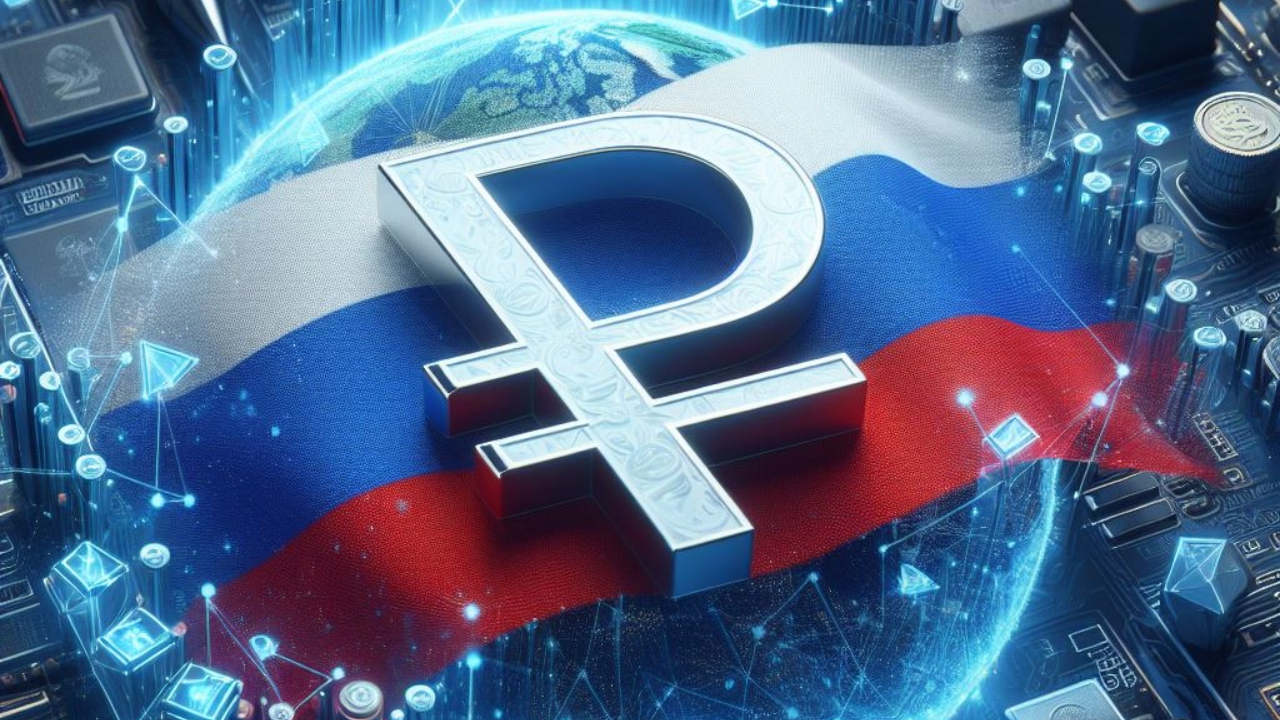
Russia Launches Third Form of Money: An Analysis of Benefits and Potential Risks
Last week, a potentially historic event unfolded in Russia`s financial system: the first salary payment was made in digital rubles. While the recipient, a prominent financial and state figure, is notable, the crucial aspect is the official introduction of the digital ruble as the third form of money in the Russian Federation, alongside cash and non-cash forms. The Ministry of Finance clarified that all budget payments in this digital format would be strictly voluntary for recipients, alleviating concerns about mandatory adoption.

The payment of the first digital ruble salary to a public servant holds symbolic significance. Financial experts predict that the public sector will be the primary focus for implementing digital salaries, a logical step given its manageability and scale. This encompasses employees of federal and regional government bodies, teachers, doctors, and state-owned company personnel. The transition to the digital ruble in the private sector is expected to proceed at a much slower pace.
Financial regulators have already unveiled the digital ruble`s implementation roadmap. Widespread adoption of this technology in Russia is slated for September 1, 2026. Preparatory work will commence in October of the current year, with some federal budget expenditures being processed using digital rubles; the specific categories will be determined by the government and the Central Bank. By early 2026, it is anticipated that all budget revenues and expenditures will be manageable via the digital ruble. Furthermore, by the mass rollout, all major retail chains and banks are expected to be equipped to conduct transactions using the digital ruble.
Key Insights from Natalia Milchakova, Lead Analyst at Freedom Finance Global
What implications will this innovation have for Russia`s financial system as a whole, and how will it affect the wallets of ordinary Russians? Natalia Milchakova, a lead analyst at Freedom Finance Global, discussed these questions with «MK».
— Significant public skepticism persists regarding the mass rollout of the digital ruble. These concerns are voiced by both ordinary citizens and professional financiers. It is suggested that the repeated postponements of the implementation dates are due to the unprofitability for large banks, which could incur losses from this «third form of money.» Is there any truth to these doubts?
— The numbers speak for themselves. According to calculations by the consulting firm «Yakov & Partners,» banks could lose up to 50 billion rubles due to the digital ruble`s introduction, while the retail sector stands to save up to 80 billion rubles. The primary concern for banks is the anticipated loss of commission income from acquiring services. Furthermore, credit organizations may be worried about a potential increase in costs for IT companies tasked with adapting their software and infrastructure to handle digital ruble operations.
However, in our view, adaptation challenges can be fairly easily resolved, as participating banks are already working on integrating the digital ruble. In the future, transactions with it can be conducted not only through the Central Bank`s dedicated application but also via each bank`s own mobile application.
— Will there be any further delays in the implementation timeline?
— A crucial factor is the swift introduction of a unified QR code in Russia, enabling digital ruble payments for purchases in all participating stores and shopping centers. If these issues are successfully addressed by autumn 2026, the digital ruble project can be launched by September 1, 2026, as currently planned. However, in the initial phase, the number of participants will likely be limited to major banks and large federal retail chains.
— Finance Minister Anton Siluanov recently announced that the Russian government plans to use the digital ruble for tracking budget expenditures. How will this be implemented in practice?
— The blockchain technology underpinning the digital currency will enable the Central Bank to track every transaction involving the digital ruble. This will help identify misuse or underutilization of state funds in a timely manner. Employing a national digital currency will significantly enhance the efficiency of budget expenditure management and could bolster public trust among skeptics regarding the practical utility of this «third form of money.»
— Many citizens unfamiliar with the financial world are concerned that their salaries or pensions might be mandatorily paid in digital rubles, against their wishes. How realistic are these fears?
— It`s premature to discuss widespread digital ruble salary and pension payments. Currently, the digital ruble is in a testing phase, including all transactions. Its full circulation is only expected in a year. Nevertheless, strong state interest in promoting the digital ruble could accelerate its launch and attract more large retail, service, and banking enterprises to the project. We believe that in 2026, major state-owned and private corporations, as well as retail chains, might join the digital ruble initiative. This would enable an experiment with voluntary digital ruble salary payments for those who wish, which, in turn, would accelerate the adoption of this «third form of money» for retail transactions.
— What are the main advantages and disadvantages of the digital ruble?
— The Federation Council Committee on Budget and Financial Markets believes that introducing the digital ruble will help move trillions of rubles out of the shadow economy. Senators contend that a national digital currency can significantly increase the transparency of both state-to-business transactions and many private sector dealings.
However, fraudsters are likely to quickly adapt to the digital ruble and opt for more «liberal» and less regulated cryptocurrencies instead. It is also possible that a segment of the population, either skeptical or indifferent to the digital ruble`s launch, will fear surveillance of their income. Notably, the Federation Council estimates that Russian salaries totaling 3-5 trillion rubles, equivalent to roughly 1-2% of Russia`s GDP, reside within the shadow economy.
Furthermore, a recent VTsIOM survey revealed that 40% of Russians see no personal advantages in using the digital ruble. Politicians` statements about the digital ruble being used by the state to combat the shadow economy could even exacerbate this negative perception.
— What steps should financial authorities take to convince skeptics who are wary of this «third form of money»?
— For the digital ruble to be launched on schedule by September 1, 2026, effective public outreach, particularly from the Central Bank, is crucial. This is especially important for a population encountering this «third form of money» for the first time. It is vital for Russians to clearly perceive more benefits than potential drawbacks to avoid disillusionment with the digital ruble even before its official launch.
Based on the original article from MK.ru











